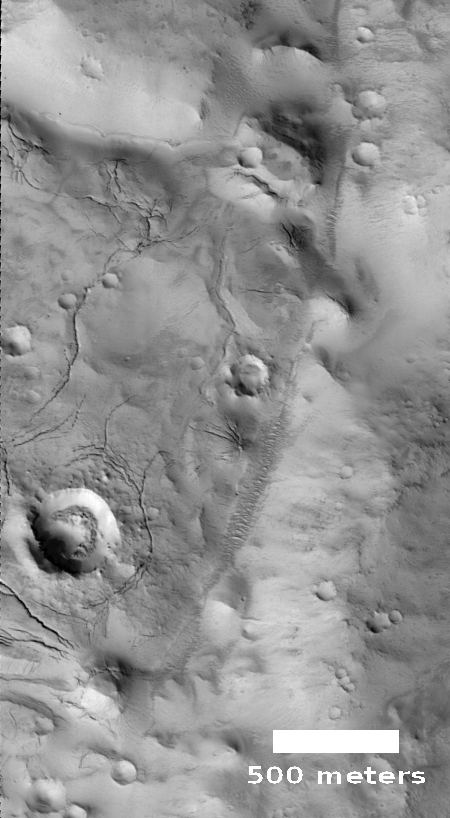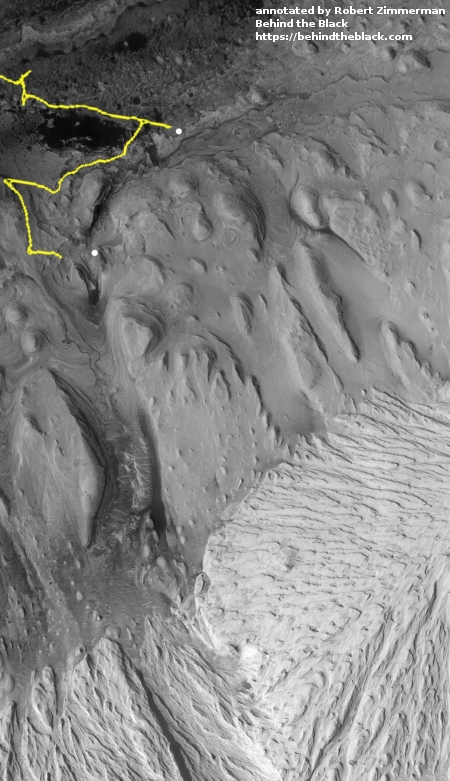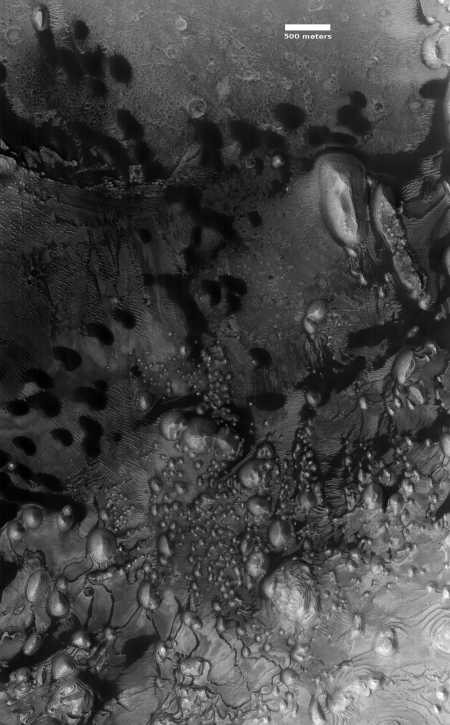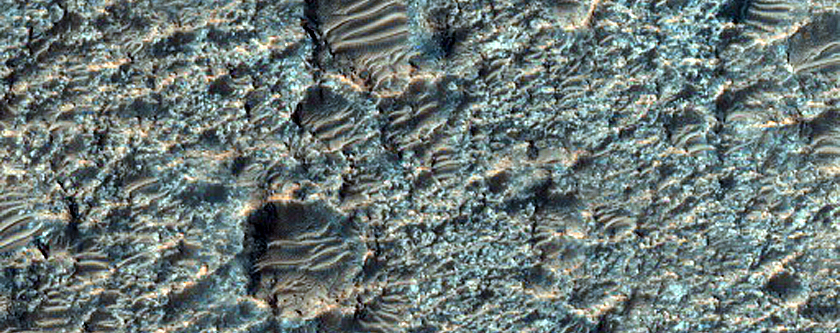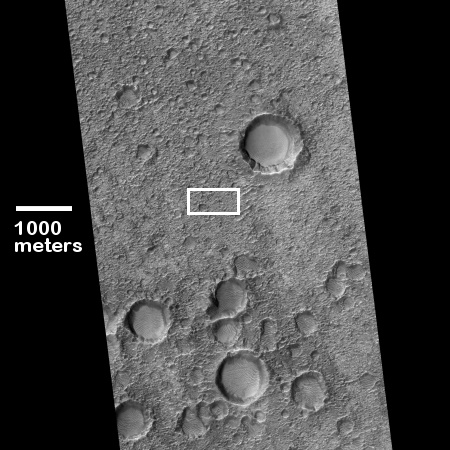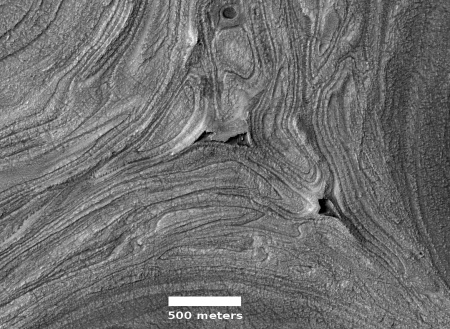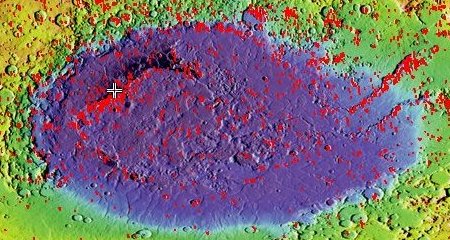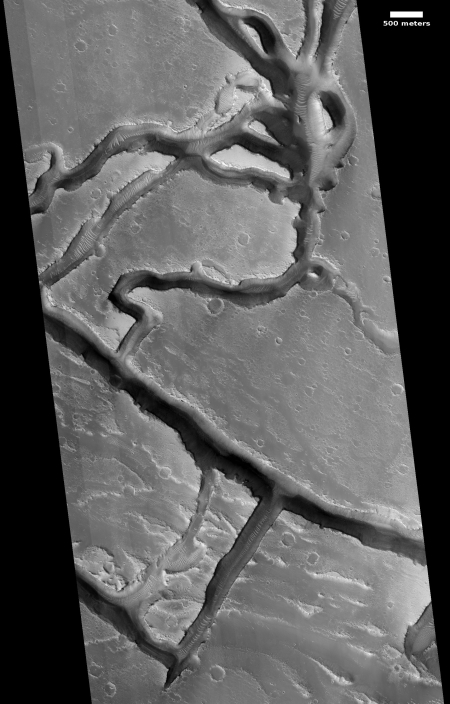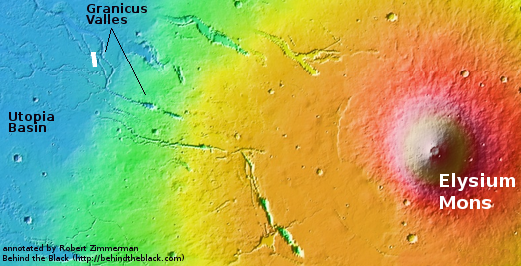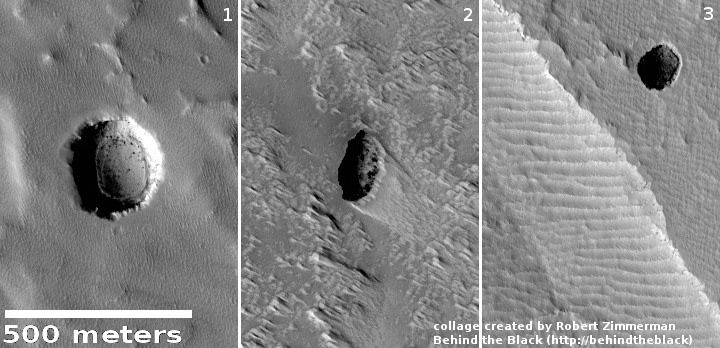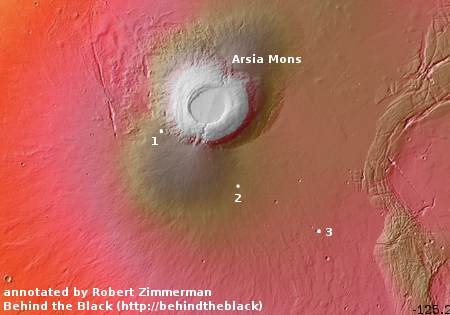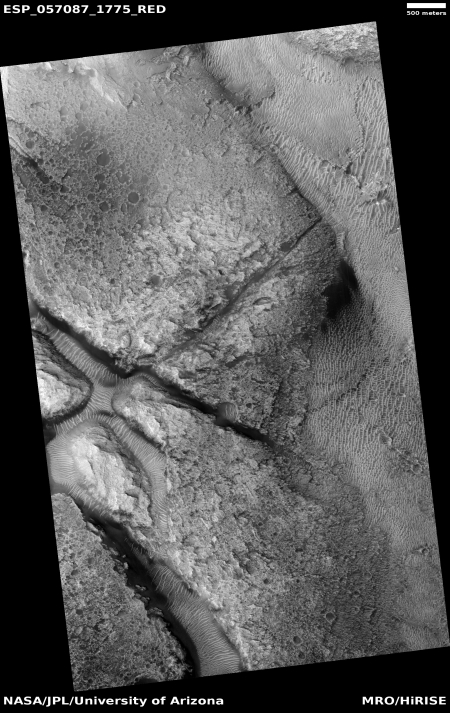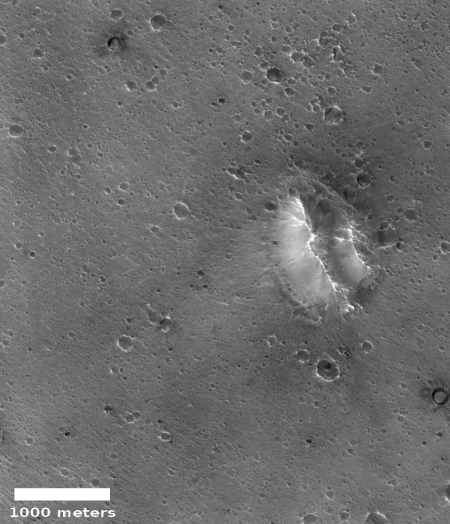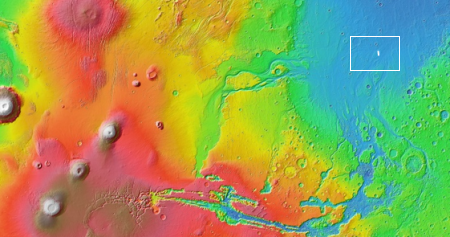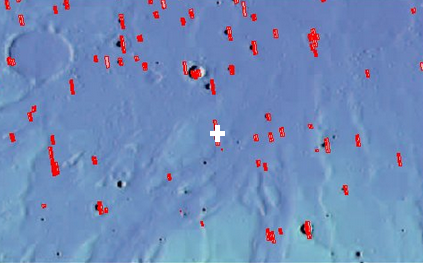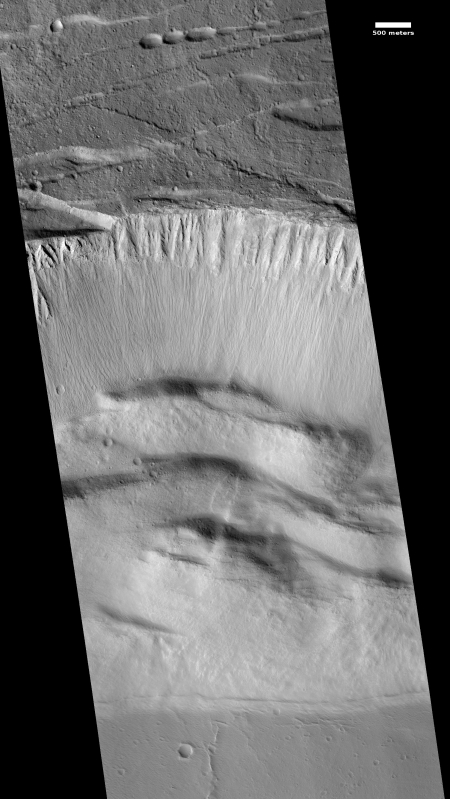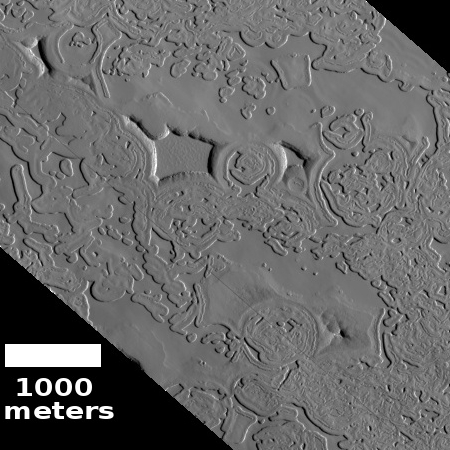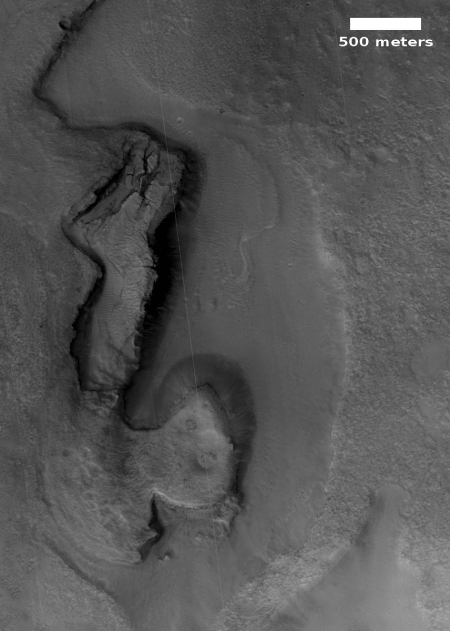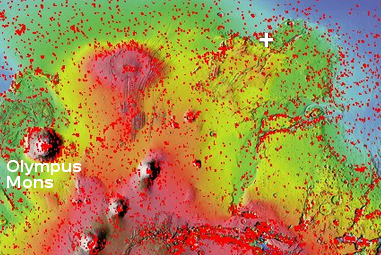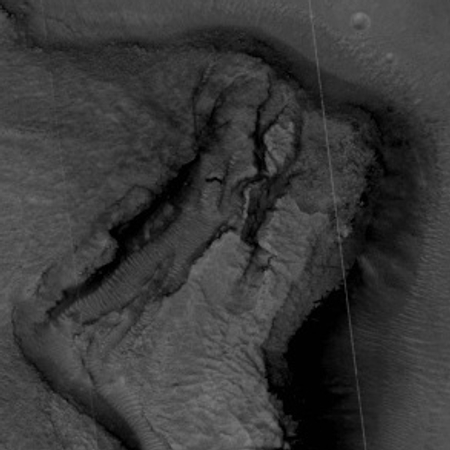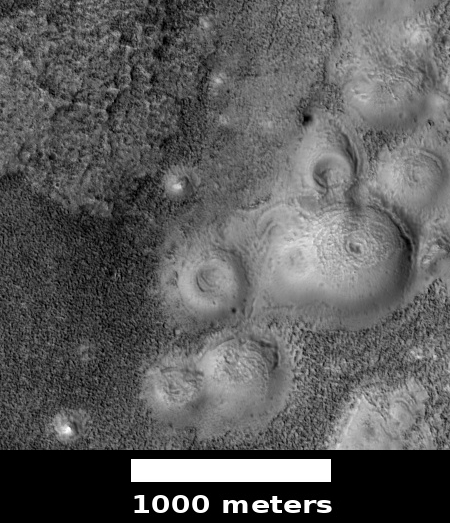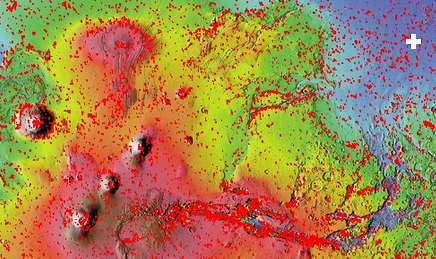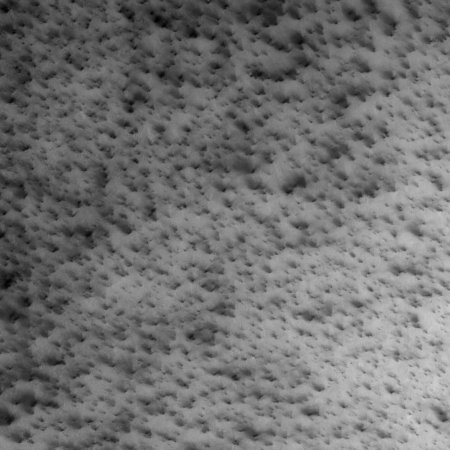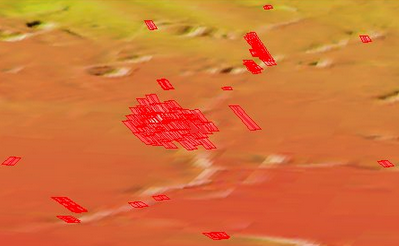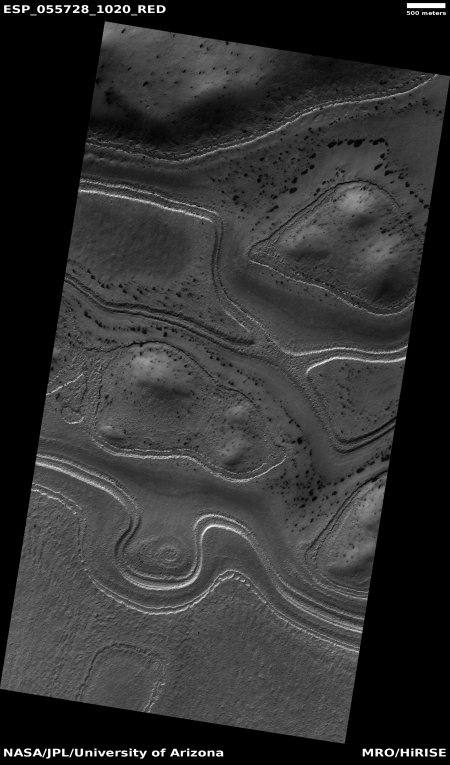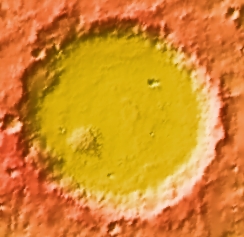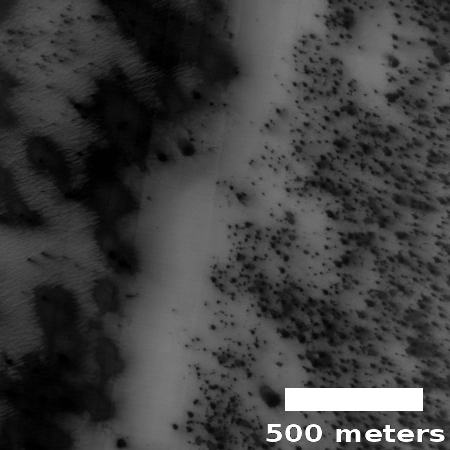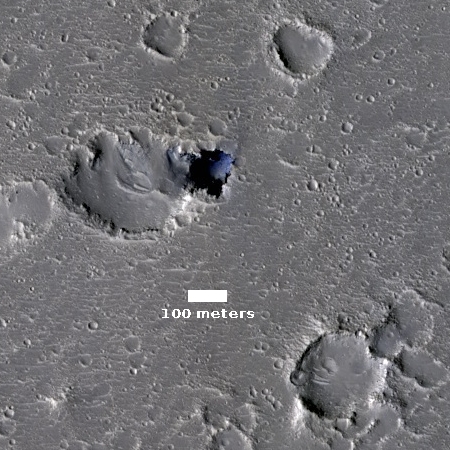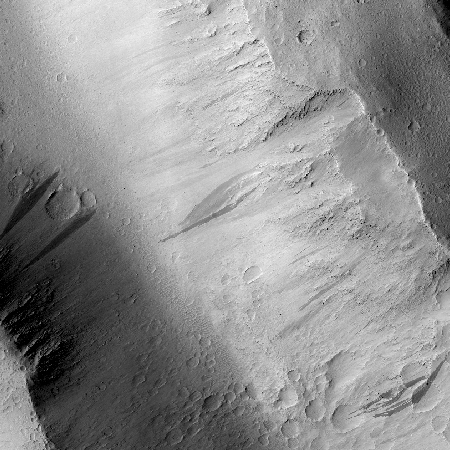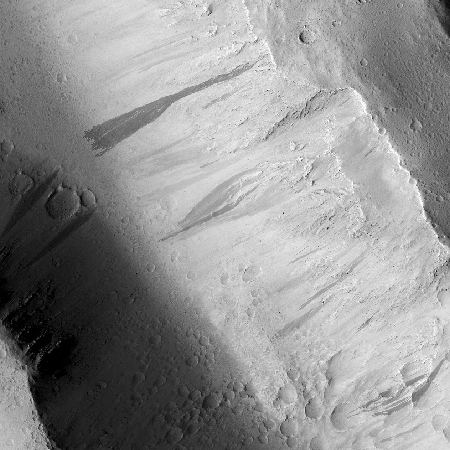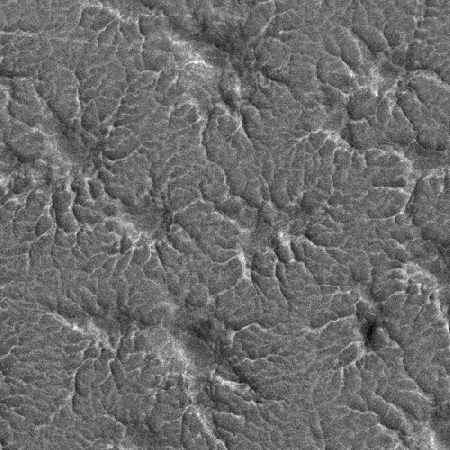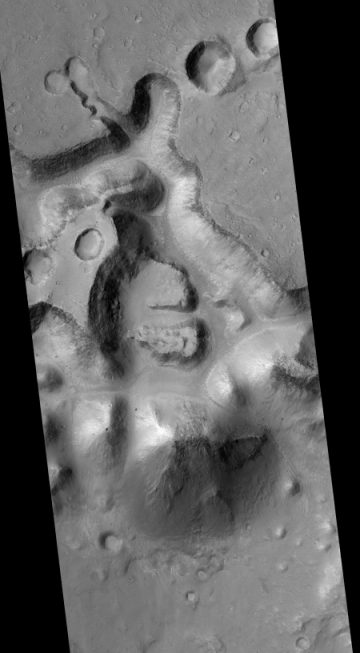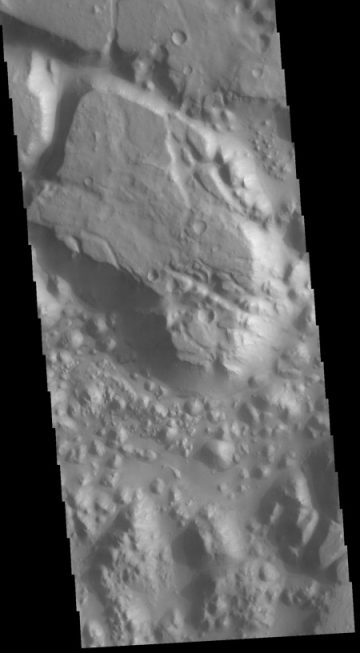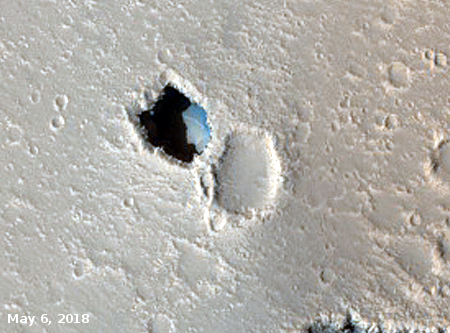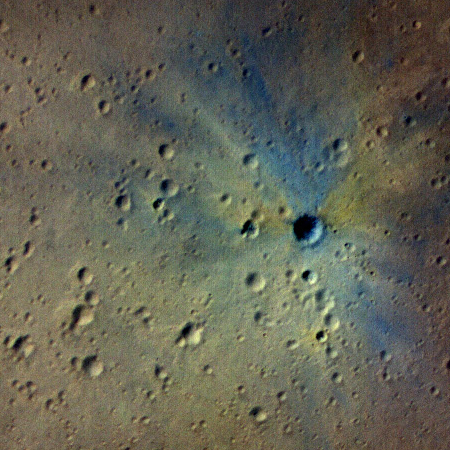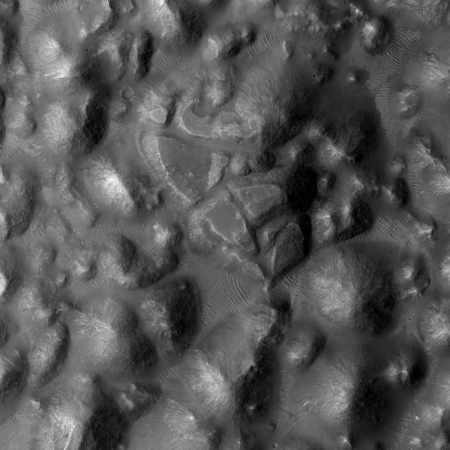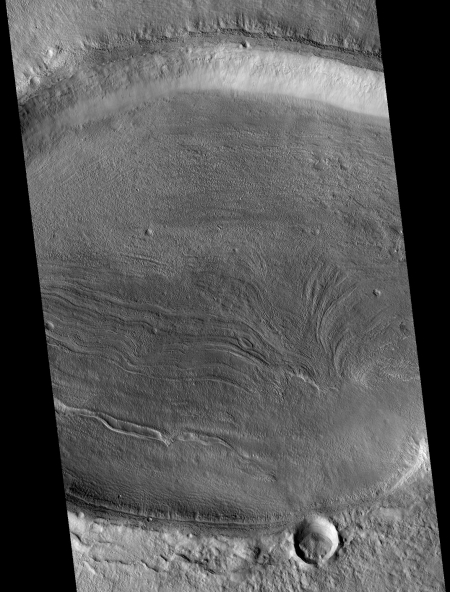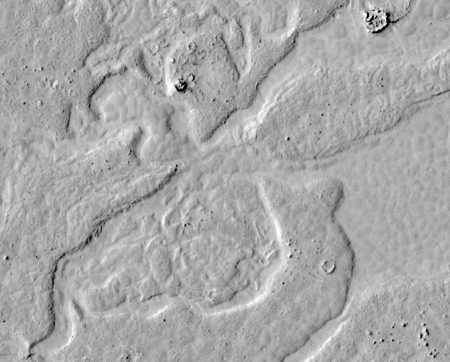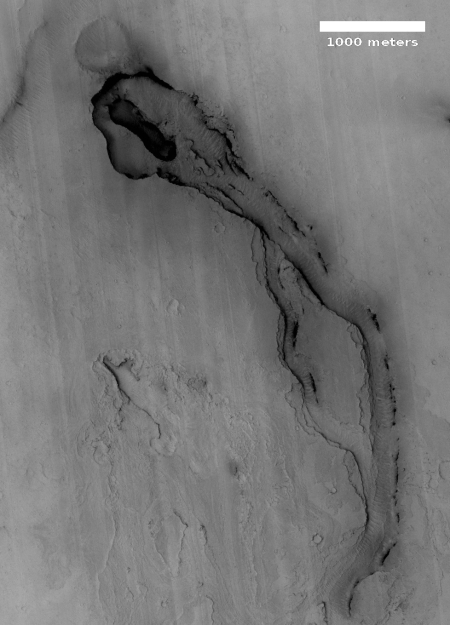
Cool image time! In their exploration of the surface of Mars using Mars Reconnaissance Orbiter (MRO), scientists often image geological features that strongly resemble Earth features. Sometimes, if real, the resemblances are significant, as they indicate important geological activity on Mars that can tell us a lot about the conditions and environment there.
The image on the right, cropped and reduced in resolution to post here, is a good example of this. It was taken by MRO on June 14, 2018, just before the global dust storm obscured the planet’s middle latitudes for most of the summer, and was part of the monthly release of new images from the spacecraft. (If you click on the image you can see the full resolution picture.) The release website, which includes no caption, describes this feature as an “apparent vent,” a determination that certainly seems reasonable. The shadowed dark features suggest an abrupt oblong pit near the edge of a cliff, formed in the center of a collapsed sink. The tear-drop shape of the collapse sink and surrounding darkened areas also suggests that something is venting from it and then blowing away to the east and south, forming the darker stained ground. Some of the dark features to the southeast might also be smaller vents, releasing their own materials into the atmosphere.
The location also reinforces this suggestion, located on the southeast lava slopes of one of Mars’ larger volcanoes, Elysium Mons. This is also a region, dubbed Athabasca Valles, that some planetary scientists believe is one of the youngest lava flows on Mars.
Finally, it appears that the pit here has darkened considerably recently. MRO has taken images of this pit twice previously, in 2008 and 2010, and in both images the pit is much lighter in color, with its sandy dune-covered floor much easier to see. In the new image the floor is now very dark. This might be caused by shadows and the angle of the Sun, but I don’t believe so. It is also clear when comparing all three images that the surrounding area, including the flow to the southeast, has also darkened with time.
All this data suggests that the pit is venting something into the air, and it is settling on the ground to the southeast, blown there by the prevailing winds. Nor is this pit the only such feature in this region. Other images by MRO show a lot of similar dark splotches.
The problem is that this feature is not on Earth but on Mars. Determining what is being vented, and why, is therefore made more difficult. Based on Earth data you would assume this is some form of volcanic vent, releasing gases from below the surface. On Mars that assumption might not hold. We might instead be seeing the venting of any number of possible materials, such as underground water-ice, carrying with it other underground materials and thus darkening the surface.
We also can’t assume that the venting is occurring because of volcanic processes. On Mars the evidence so far gathered suggests that active volcanic activity ceased a very long time ago, even for this very young lava region. The venting is likely caused by something else, a fact that in itself is probably the most significant take-away from these images.
Something appears to be causing an active vent on the surface of Mars. Finding out the root cause of that venting is probably one of the more interesting questions facing researchers who study the Martian surface.

